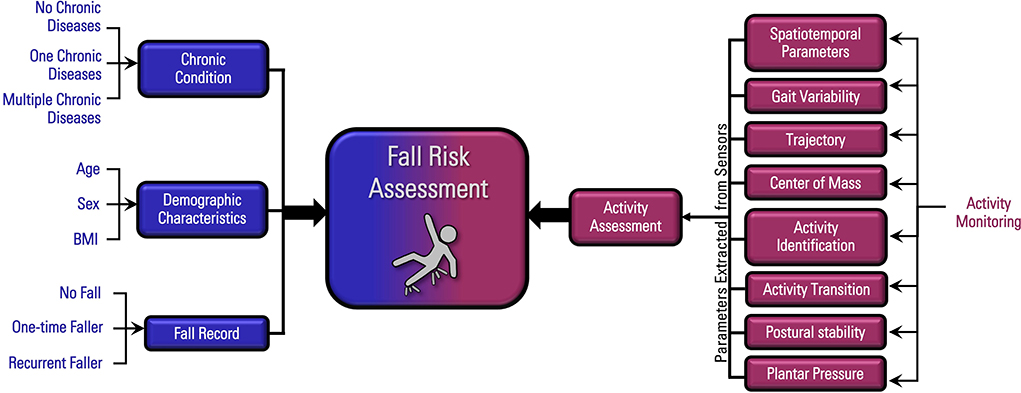Get This Report about Dementia Fall Risk
Get This Report about Dementia Fall Risk
Blog Article
The Dementia Fall Risk Ideas
Table of ContentsDementia Fall Risk - An OverviewThe Best Strategy To Use For Dementia Fall RiskSee This Report about Dementia Fall RiskGetting The Dementia Fall Risk To Work
A loss danger analysis checks to see exactly how likely it is that you will certainly drop. The assessment generally includes: This consists of a series of questions regarding your overall health and if you've had previous drops or issues with balance, standing, and/or walking.Treatments are suggestions that might decrease your danger of falling. STEADI includes three steps: you for your risk of dropping for your threat elements that can be improved to attempt to stop drops (for instance, balance troubles, impaired vision) to reduce your threat of falling by using reliable approaches (for example, offering education and resources), you may be asked numerous inquiries including: Have you fallen in the previous year? Are you worried regarding falling?
If it takes you 12 secs or even more, it may mean you are at higher risk for a loss. This examination checks strength and equilibrium.
Move one foot halfway onward, so the instep is touching the large toe of your various other foot. Move one foot completely in front of the other, so the toes are touching the heel of your various other foot.
Top Guidelines Of Dementia Fall Risk
Many drops occur as a result of numerous adding elements; for that reason, taking care of the danger of dropping begins with identifying the factors that add to drop threat - Dementia Fall Risk. A few of the most pertinent danger elements include: Background of prior fallsChronic medical conditionsAcute illnessImpaired stride and equilibrium, lower extremity weaknessCognitive impairmentChanges in visionCertain high-risk medications and polypharmacyEnvironmental variables can likewise boost the risk for drops, including: Inadequate lightingUneven or damaged flooringWet or unsafe floorsMissing or harmed handrails and get hold of barsDamaged or poorly equipped equipment, such as beds, wheelchairs, or walkersImproper use assistive devicesInadequate supervision of individuals residing in the NF, including those that show hostile behaviorsA successful loss danger management program requires a comprehensive professional analysis, with input from all members of the interdisciplinary team

The treatment plan ought to also consist of treatments that are system-based, such as those that promote a risk-free setting (ideal illumination, hand rails, order bars, etc). The performance of the interventions should be assessed periodically, and the treatment plan changed as required to reflect adjustments in the fall danger analysis. Implementing a fall threat management system making use of evidence-based ideal technique can lower the frequency of drops in the NF, while restricting the potential for fall-related injuries.
The 9-Second Trick For Dementia Fall Risk
The AGS/BGS standard recommends evaluating all grownups matured 65 years and older for autumn risk every year. This screening is composed of asking patients whether they have actually fallen 2 or more times in the previous year or looked for medical attention for an autumn, or, if they have actually not dropped, whether they really feel unstable when walking.
People that have fallen as soon as without injury must have their balance and stride evaluated; those with stride or balance problems should obtain added assessment. A history of 1 autumn without injury and without gait or balance issues does not call for additional assessment beyond continued annual fall danger Dementia Fall Risk testing. Dementia Fall Risk. An autumn danger analysis is required as component of the Welcome to Medicare exam

The 9-Minute Rule for Dementia Fall Risk
Recording a drops background is one of the top quality signs for loss avoidance and administration. Get the facts copyright drugs in specific are independent forecasters of drops.
Postural hypotension can frequently be reduced by lowering the dose of blood pressurelowering medicines and/or quiting drugs that have orthostatic hypotension as an adverse effects. Use above-the-knee support tube and copulating the head of the bed elevated may additionally reduce postural decreases in high blood pressure. The advisable components of a fall-focused physical exam are received Box 1.

A TUG time higher than or equivalent to 12 seconds suggests high loss risk. The 30-Second Chair Stand examination assesses lower extremity stamina and balance. Being unable to stand from a chair of knee elevation without making use of one's arms suggests enhanced fall danger. The 4-Stage Balance test assesses static balance by having the patient stand in 4 settings, each gradually extra difficult.
Report this page